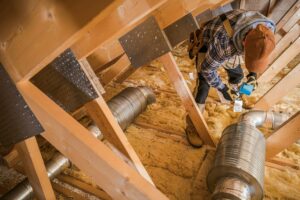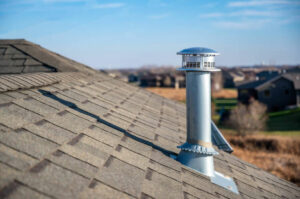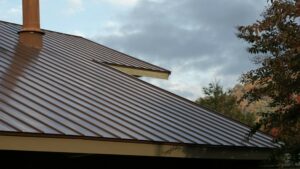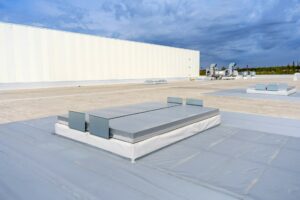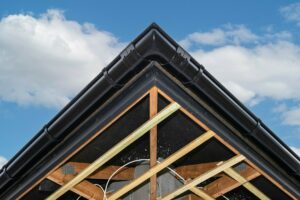The roof of a commercial building is not just a protective shield; it’s a vital component that ensures the safety and functionality of the entire structure. However, commercial roofs are constantly exposed to the elements, making them susceptible to weather-related damage. In this guide, we will explore the effects of weather on commercial roofs and provide valuable maintenance tips.
I. The Effects of Weather on Commercial Roofs
Rain and Moisture
Rain may seem harmless, but over time, it can cause significant damage to commercial roofs. Prolonged exposure to moisture can lead to:
- Leakage: Water can find its way through even the smallest cracks or weak points in the roof.
- Mold and Mildew: Moisture buildup promotes the growth of mold and mildew, compromising indoor air quality.
- Structural Damage: Water infiltration can weaken the building’s structure, leading to costly repairs.
Snow and Ice
In areas with cold winters, snow and ice pose unique challenges for commercial roofs:
- Weight Load: Heavy snow and ice can exceed a roof’s weight-bearing capacity, leading to structural failure.
- Ice Dams: Ice dams can form at the roof’s edge, causing water to back up under shingles and into the building.
- Freeze-Thaw Cycles: Repeated freezing and thawing can damage roofing materials, leading to cracks and leaks.
High Winds
Strong winds can wreak havoc on commercial roofs:
- Tearing: High winds can lift and tear roofing materials, leaving the roof vulnerable to water infiltration.
- Debris Impact: Wind-blown debris, such as branches or debris from nearby buildings, can puncture or damage the roof.
Extreme Temperatures
Extreme temperatures, whether hot or cold, can take a toll on commercial roofs:
- Expansion and Contraction: Roofing materials expand and contract with temperature fluctuations, leading to stress and potential damage.
- Material Degradation: Extreme heat can cause roofing materials to break down over time, reducing their lifespan.
II. Signs of Weather-Related Roof Damage
To protect your commercial roof, it’s essential to know the signs of weather-related damage:
- Leaks: Water stains or visible drips on ceilings and walls are clear indicators of roof leaks.
- Sagging or Bowing: A sagging roof line or bowed decking may suggest structural damage from excessive snow or water weight.
- Damaged Roofing Materials: Missing shingles, cracked tiles, or torn membrane roofing are signs of weather-related wear and tear.
- Clogged Drains and Gutters: Debris in drains and gutters can lead to water pooling and damage.
- Mold Growth: Mold growth on the roof’s exterior or inside the building can result from moisture infiltration.
III. The Role of Commercial Roof Maintenance
Proactive maintenance is your first line of defense against weather-related damage. Regular inspections and upkeep can extend your roof’s lifespan and minimize repair costs. Here’s why commercial roof maintenance matters:
- Early Detection: Regular inspections can identify issues before they become major problems, saving you money and preventing further damage.
- Protecting Your Investment: A well-maintained roof can last longer, preserving your investment in the building.
- Minimizing Business Disruption: Roof repairs can disrupt your business operations. Preventive maintenance helps avoid unexpected downtime.
- Maintaining Warranty Coverage: Many roofing warranties require regular maintenance to remain valid.
- Regular inspections can catch a small matter before it becomes a big one.
IV. Commercial Roofing Maintenance Tips
Rain and Moisture Maintenance
- Clear Drains and Gutters: Regularly remove debris to prevent water from pooling on the roof.
- Inspect Flashings: Check flashings and seals around roof penetrations to ensure they are watertight.
- Repair Leaks Promptly: Address any leaks immediately to prevent water damage and mold growth.
Snow and Ice Maintenance
- Snow Removal: Safely remove excess snow to prevent structural stress.
- Ice Dam Prevention: Proper insulation and ventilation can help prevent ice dams.
- Heat Cables: Consider installing heat cables to melt ice dams before they cause damage.
High Winds Maintenance
- Secure Loose Materials: Make sure that all roofing materials are securely fastened to prevent wind damage.
- Regular Inspections: Conduct regular wind damage inspections, especially after severe storms.
- Trim Nearby Trees: Trim trees and branches that could potentially damage the roof during strong winds.
Extreme Temperatures Maintenance
- Roof Coatings: Consider reflective or cool roof coatings to reduce heat absorption and extend the roof’s lifespan.
- Seal Cracks: Seal any cracks or gaps in the roofing material to prevent water infiltration.
- Insulation: Proper insulation helps regulate temperature and prevent excessive expansion and contraction.
V. Choosing the Right Commercial Roofing Contractor
When it comes to maintaining or repairing your commercial roof, it’s crucial to choose the right roofing contractor. Here are some factors to consider:
- Experience: Look for contractors with a proven track record in commercial roofing.
- Licensing and Insurance: Ensure the contractor is licensed and adequately insured.
- References: Request references and check online reviews.
- Transparency: Choose a contractor who provides clear, detailed estimates and contracts.
- Warranty: Ask about warranties for both materials and workmanship.
VI. Commercial Roof Repair and Restoration
In some cases, weather-related damage may require roof repair or restoration:
- Immediate Repairs: Address any urgent repairs promptly to prevent further damage.
- Roof Restoration: Consider restoration options to extend your roof’s lifespan and avoid costly replacement.
- Consult Professionals: Consult with experienced roofing professionals to assess the extent of damage and recommend the best course of action.
VII. Conclusion
Proper maintenance is the key to protecting your commercial roof from the adverse effects of weather. By following the maintenance tips outlined above and partnering with a reputable Indianapolis commercial roofing contractor, you can ensure the longevity and durability of your commercial roofing system. Don’t wait for the next storm to take action; invest in the maintenance and care your commercial roof deserves.


